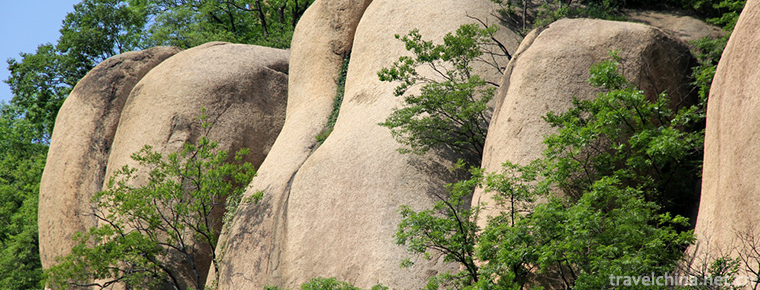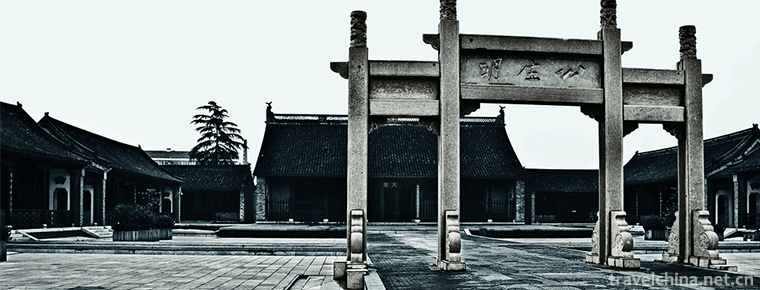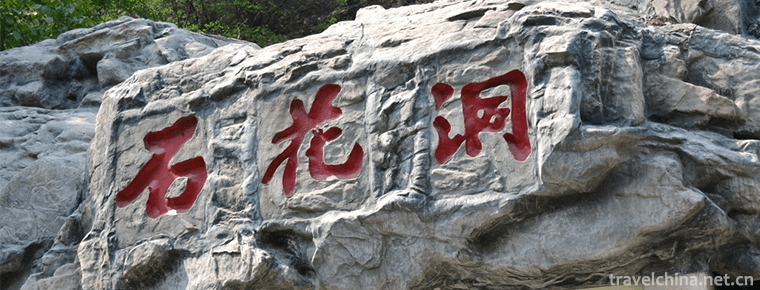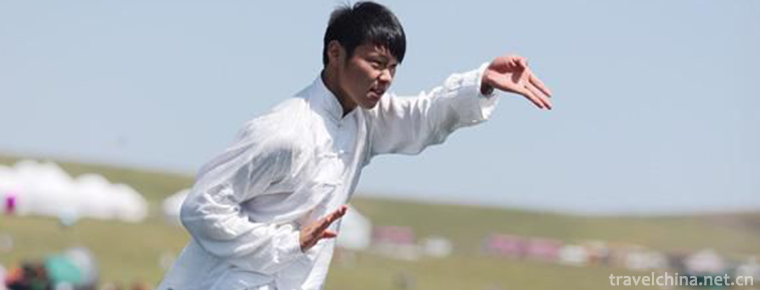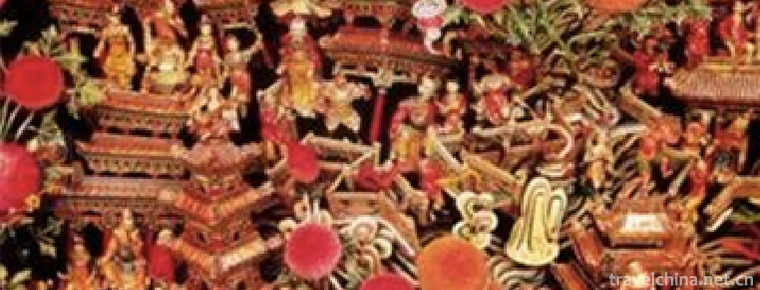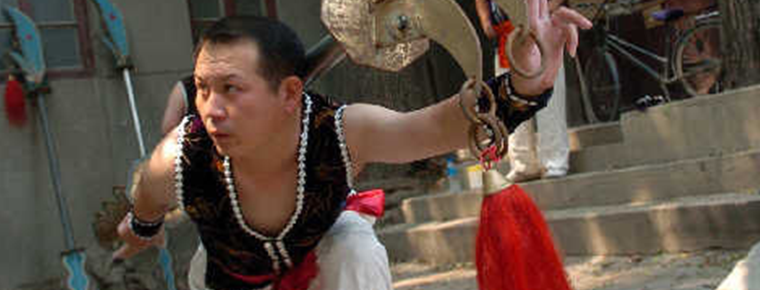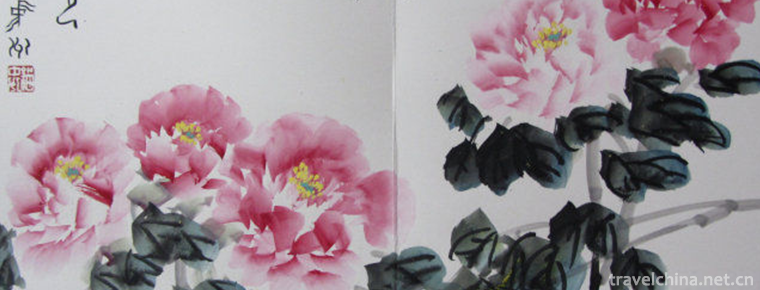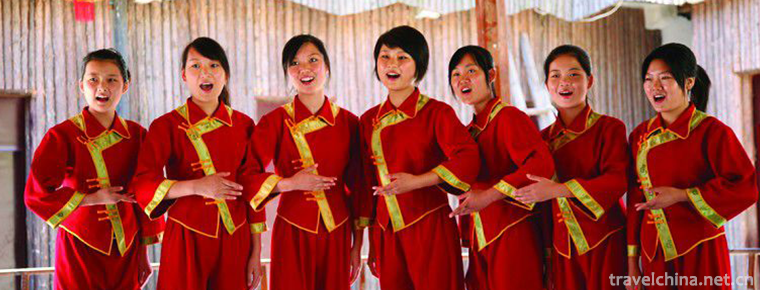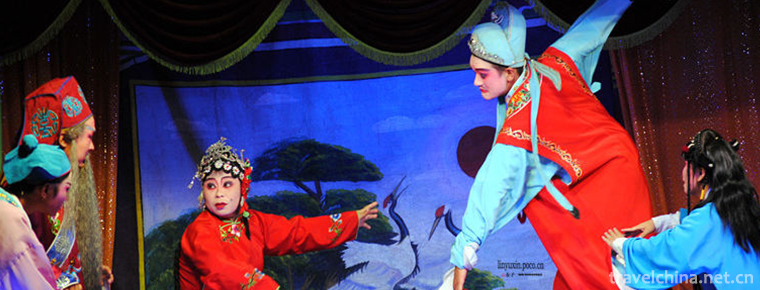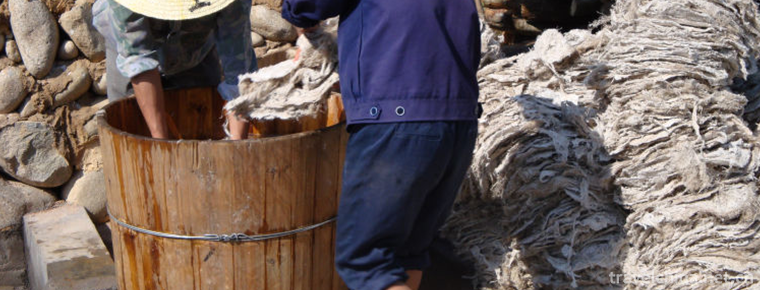Jingbian donkey
Jingbian donkey
Jingbian Donkey Running, a traditional dance in Jingbian County, Yulin City, Shaanxi Province, is one of the national intangible cultural heritage.
Jingbian donkey running is a traditional folk song and dance performance form spread in Jingbian County, Yulin City, Shaanxi Province. Legend is created by the folk story of "Zhang Guolao riding donkey upside down" or adapted by artist Yao Fu according to "running bamboo horse" in Chenghua Ming Dynasty. Donkeys usually improvise after the Yangko team. After being processed and sorted out by famous artist Zhang Youwan and dancer Meng Haiping, it has become a unique folk stage performing art in northern Shaanxi with abundant life interest, rich technology. It is characterized by personification of donkey, vivid, emotional, humorous performance, showing attractive folk cultural and artistic charm and aesthetic value.
On June 14, 2008, Jingbian donkey was approved by the State Council to be included in the second batch of national intangible cultural heritage list, the heritage number: III-56.
Historical evolution
Jingbian donkey race was very popular in the Qing Dynasty according to the records of geography, history, production mode and county chronicles in Guangxu period. There are three kinds of local legends about Jingbian donkeys: one is that Jingbian donkeys originated from the folktale "Zhang Guolao riding donkeys upside down" in the myth "Eight Immortals Crossing the Sea", which was created and circulated by folk artists. Secondly, it is said that Yao Fuyou, a folk artist from Jingbian, adapted and developed in Chenghua period of Ming Dynasty according to the prosperous local "bamboo horse running". Thirdly, it said that it spread from Dingbian and Anbian to Jingbian at the beginning of the Republic of China. These three legends seem to have certain origins and bases. Although there is no obvious mention of donkey running in local chronicles and other materials and inscriptions, the artistic level and popularity of Jingbian folk donkey running, the primitive charm of dance itself, and the habit of donkey running during the Spring Festival of Jingbian people for generations show that this is an ancient art species. Jingbian donkeys add earthy, fresh and magnificent colors to the hundred gardens with their intriguing local customs and rich and simple flavor of life.
In the old society, folk juggling and dancing such as "Jingbian Running Donkey", "Zhang Gongbei Zhang Po", "Big Head Monk Playing Liucui", "Ergui Wrestling", "Overlord Whip" appeared at the end of "social fire".
After liberation, because of the prosperity and development of cultural undertakings, it was able to carry forward and flourish. Ten years after the Cultural Revolution, the Jingbian donkey stopped performing.
In the 1960s, Jingbian donkey-running artists first brought the art of square to the stage. The Jingbian donkey is decorated with unprocessed raw materials such as rabbit skin, donkey skin, donkey ear and donkey tail by means of props reform, welding the donkey frame with steel bars and wire, adding rotatable "bearings", adding brackets and four small wheels under it, and decorating the donkey with lamp cannon. The restructured donkey can not only move its ears, wag its tail, blink its eyes and open its mouth, but also turn to "spin 360 degrees backward riding". It can even cooperate with such high, difficult and new skills as "saddle down donkey" and "double riding donkey", which injects new vitality into the art of running donkey and brings bright prospects for the development of the art of running donkey in Jingbian.
In 1976, when Comrade Ren Xiaoxiao was the director of the Cultural Library, a special team was formed by Comrade Chen Yun, the deputy director, and Comrades Li Zhi and Mili Zhong. The work of collecting and excavating the national folk cultural heritage was carried out.
Inheritance and protection
Inheritance value
Jingbian donkey in northern Shaanxi occupies an important position in folk dance art and is representative. Jingbian donkey running has different characteristics from the similar forms circulated throughout the country. Most of these performances are entertainment and romance between characters, lacking of excellent characteristics in the performance of the relationship between "donkey" and "character". The donkey running in Hebei Province is the representative of this aspect. The Jingbian donkey in northern Shaanxi is unique in this link. It personifies the donkey and integrates human and donkey. It is more exaggerated and not distorted. The whole performance is vivid, emotional, humorous and humorous. Its main value lies in:
(1) Practical value: The "donkey shape", "donkey posture" and "donkey god" of Jingbian donkey performance come from life entirely. They imitate vividly and vividly. They are loved by the masses. They can bring surprise and joy to the viewers. They want to laugh as soon as they see them, bring pleasure and joy to the viewers, and dispel worries and worries. As a result, it is well received by the viewers that the Jingbian donkey in northern Shaanxi is the salt in the food of the people in northern Shaanxi, and can not be abandoned for a while.
(2) Academic value: Jingbian Running Donkey is a typical art form of expressing humanistic feelings and the true personality of northern Shaanxi people. It combines the real life with the true art skillfully, naturally combines the real life with the true artistic feelings, and organically unifies the real life with the romantic colors, thus forming an inaccessible artistic appeal. To sum up, in the construction of a harmonious society, rescuing and protecting Jingbian donkeys in northern Shaanxi is a very important task.
Inheritance status
The difficulties of inheriting donkey skills lie in: firstly, they can not adapt to the living conditions of market economy, the audience group shrinks and the living space shrinks; secondly, they do not have a regular and long-term display platform; with the decrease of rural population, some of them have lost the soil of living inheritance; thirdly, young people do not understand and love them, along with the economic and social development. Development, very few young people can "close contact" to survive, not to mention from childhood, the loss of familiarity and love, will lose the power of inheritance. The folk dance is in an endangered state and needs to be protected and inherited urgently.
Inheriting characters
Zhang Youwan, male, born in February 1943, is the representative successor of Jingbian donkey, the second batch of state-level intangible cultural heritage projects, which was declared by Jingbian County, Shaanxi Province.
protective measures
Zhang Youwan, the representative successor of Jingbian Running Donkey National intangible cultural heritage project, actively carried out the activities of running donkey heritage, held training courses for running donkeys, and recruited apprentices free of charge.
On January 7, 2019, Yulin City held a licensing ceremony for Jingbian Donkey Training Institute, Jingbian Donkey Training Institute (address: Jingbian County Cultural Museum) and Jingbian Donkey Training Institute (address: North Street of Yulin City).
social influence
Important exhibition
In 1976, when Comrade Ren Xiao was the director of Jingbian Cultural Museum, Chen Yun, the deputy director of Jingbian Cultural Museum, formed a special team to excavate and develop Jingbian Donkey Running. They co-authored the donkey running program "On the Road to Family Visits" with the donkey performers, pushed the folk "social group" tail onto the art stage, and participated in performances in Yulin City, Shaanxi Province and Beijing.
In 1982, Jingbian Running Donkey participated in the shooting of Agricultural Film Studio The Aroma of the Soil. Later, the dance went to France, Switzerland, the former Soviet Union and other countries for cultural exchanges.
Honorary commendation
In 1978, Zhang Youwan compiled and performed the Jingbian Donkey Running Program "Old couples attend the Sangan Club", which was awarded by Jingbian County.
In 1979, Jingbian County Cultural Museum took Jingbian Donkey Running as its original compilation and created a 12-minute dance drama "On the Way to Visit Families", participated in the performance of Yulin Spring Festival literature and art, and won the first prize.
In 1980, Jingbian donkey participated in the national performance of literature and art, and was awarded by the Ministry of Culture.
In 2013, Jingbian donkeys participated in the third Shaanxi Peasant Culture Festival and won the Excellent Performance Award.
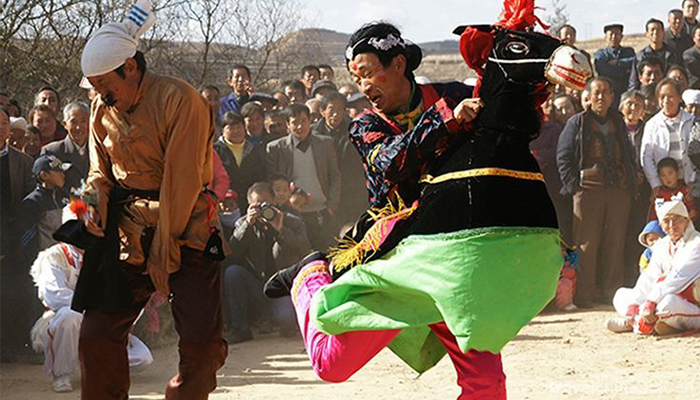
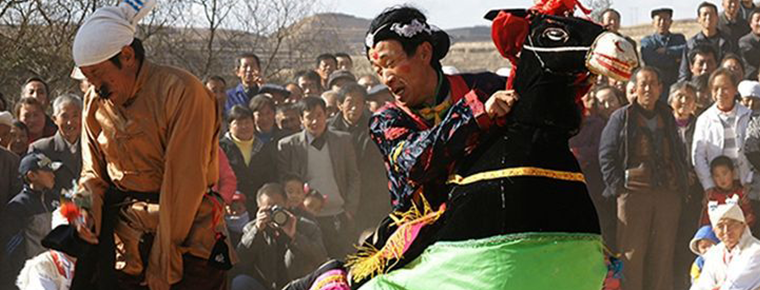
Jingbian donkey
-
Chaya Mountain Scenic Spot
Views: 205 Time 2019-01-04 -
Huaian Government Office
Huai'an government office is located in Huai'an City, Jiangsu Province, which is a national AAAA tourist attraction. It is located in Dongmen Street, Huai'an District, the old city of Huai'an, north o
Views: 111 Time 2019-01-17 -
Shihuadong National Geological Park
Beijing Shihuadong National Geopark is located in Cheying Village, Nancheng Town, Hebei Province, Fangshan District, Beijing. It is a seven-storey karst cave 55 kilometers away from Beijing
Views: 153 Time 2019-02-08 -
Jia Jia Quan
Amaranth, also known as Amaranth, Amaranth hammer, one of the traditional Chinese boxing. It was founded by Mr. Junai Zhou (1724-1783) in Heshui County, Zhengzhou, in the reign of Qianlong in the Qing
Views: 248 Time 2019-04-16 -
Sweat green
"Khan Qing Gele" is a heroic epic of the Mongolian people in Haixi. In the form of rap and speech, it tells the story of the Mongolian heroes destroying demons and saving the people, flashin
Views: 243 Time 2019-05-02 -
Hui Heavy Knife Wushu
Heavy knife is the original name of big knife. It is a traditional weapon around Beijing and Tianjin. It has a history of thousands of years in China. The original name of Jinmen
Views: 194 Time 2019-05-04 -
Luoyang Peony Festival
The Chinese Luoyang Peony Culture Festival, formerly known as the Luoyang Peony Flower Festival, has been selected into the national intangible cultural heritage list since 1983. In November 2010, it
Views: 125 Time 2019-05-15 -
Lv Jiahe Folk Song
Lvjiahe Folk Song is a kind of folk song which is popular in Lvjiahe Village, Guanshan Town, Danjiangkou City, Hubei Province. Located in Wudang Mountain Scenic Area, the village retains a large numbe
Views: 215 Time 2019-05-15 -
PuXian opera
Puxian Opera is one of the oldest operas in China. It originated in Tang Dynasty, became in Song Dynasty and flourished in Ming and Qing Dynasty. It is known as the "living fossil" of Southe
Views: 136 Time 2019-06-09 -
Making Techniques of Lianshi Paper in Lead Mountain
Lead Mountain Lianshi Paper Making Skills, local traditional handicraft in Jiangxi Province, one of the national intangible cultural heritage.
Views: 213 Time 2019-06-10 -
Guangyuan transportation
Guangyuan has been the transportation hub and material distribution center in the adjacent areas of Sichuan, Shaanxi and Gansu since ancient times. The reconstructed Guangyuan new railway station includes Baoji Chengdu double track railway and
Views: 99 Time 2020-12-15 -
Dazhou health
By the end of 2019, Dazhou city has 4514 health institutions, including 430 hospitals and health centers, 8 maternal and child health centers (stations) and 8 centers for Disease Control and prevention. There were 35862 beds in health institutions. Am
Views: 375 Time 2020-12-20
